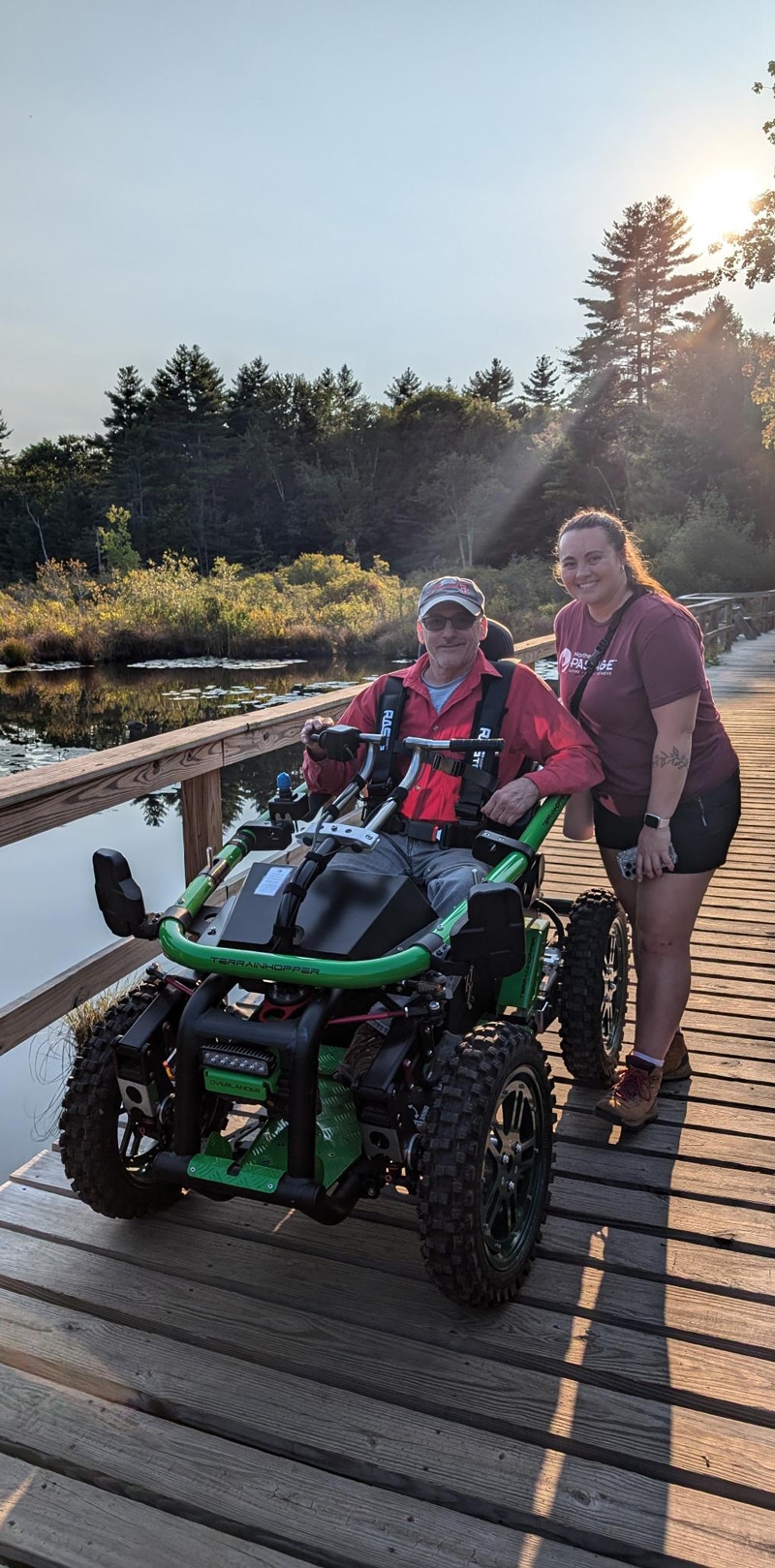Written by David Johnson
Photographed by Derrick Trent
The Piscassic Greenway has always beckoned to Wayne. But the fallout from a brutal accident left him dependent on a wheelchair to get around, making trail use a challenge. Until the TerrainHopper arrived.

He was 21 when it happened. Just starting a career as a firefighter, Wayne suffered a horrendous fall during a standard training session, and he broke his back, leaving him paralyzed from the waist down. It took three years of intense therapy to regain motor activity in his lower body, after which he was able to lead a fairly active life. As he aged, however, his ambulatory ability deteriorated; today, Wayne relies on braces and canes to get around.
Negotiating even moderate trails is a near-impossible proposition. But then he connected with Northeast Passage, the accessible recreation program out of the University of New Hampshire and discovered a conveyance that allowed him to reconnect with his love of the outdoors.
“It’s called a TerrainHopper,” said Sam Wang, Program Specialist for Northeast Passage. “It’s an all-terrain device that is able to go wherever people can walk, so it’s legally allowed to go on trails because it’s a personal mobility device. It’s got a 10-inch clearance on water, rocks, roots, anything you can think of, and can go up to a 45-degree angle on any slope. People with spinal cord injuries, amputees, or anyone with muscle tone weakness or imbalance issues can use it to experience the outdoors again.”
Music to Wayne’s ears. He first gave the TerrainHopper a test drive in March at the Northeast Passage offices. But it wasn’t until September when he was able to put the device into action and return to one of his all-time favorite places: the Piscassic Greenway.
The event? SELT’s “Geology Tour of Piscassic Greenway field trip,” a free public outreach event that brought users in for a guided tour of this beloved trail. Thanks to the TerrainHopper, Wayne was able to visit the trails for the first time in 12 years (the very trail system he had helped SELT create through advocacy and financial support).
“Everybody deserves a chance to be on the trails and outdoors,” Sam says. “It’s just so important to always think about accessibility.”
Accessibility is an important component in SELT’s drive to bring as many children, adults, and families as possible closer to nature through a variety of outreach and stewardship initiatives. A collaboration with Northeast Passage like this (and in the future), represents just one avenue to engage under-represented communities.
“Everybody deserves a chance to be on the trails and outdoors."
“We want to welcome all people from all backgrounds and circumstances to SELT’s mission,” says Zoe Graves, SELT’s Outreach and Education Director. “Working with organizations like Northeast Passage, Indonesian Cultural Connect, and Black Heritage Trail New Hampshire helps SELT better understand the communities in our service area while working to ensure that nature is accessible for everyone.”
For Wayne, his trip back to the trails held particular significance, above and beyond the technology that helped make it happen. Along the way, the group explored the Mraz Trail leg of the Piscassic Greenway, which was named after his good friend Will Mraz, who died in a car accident in 2006.
“It meant a lot,” Wayne says, emotion in his voice. “I haven’t really spent that much time out there until the Northeast Passage came into my life. It was a dream come true.”

